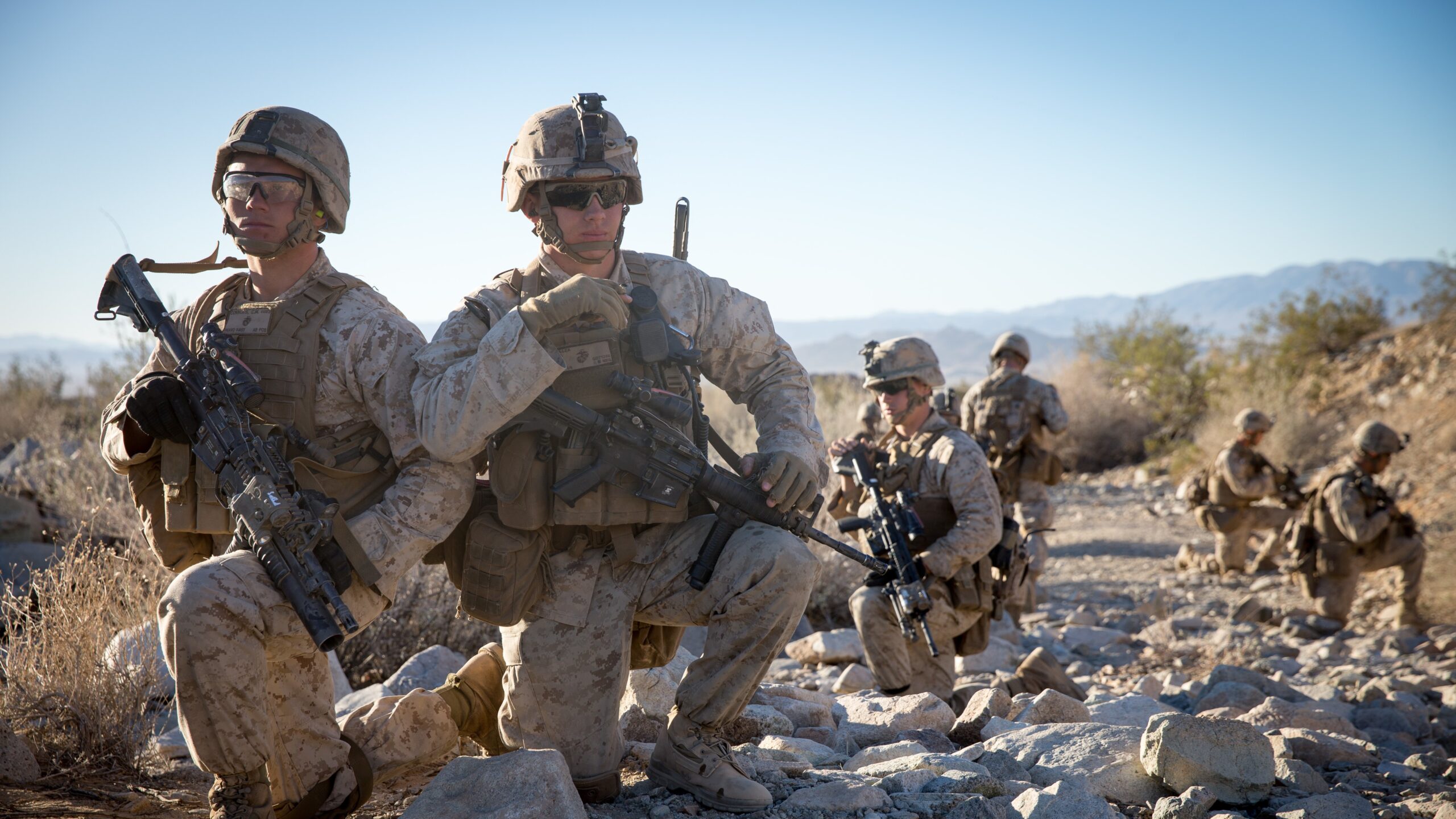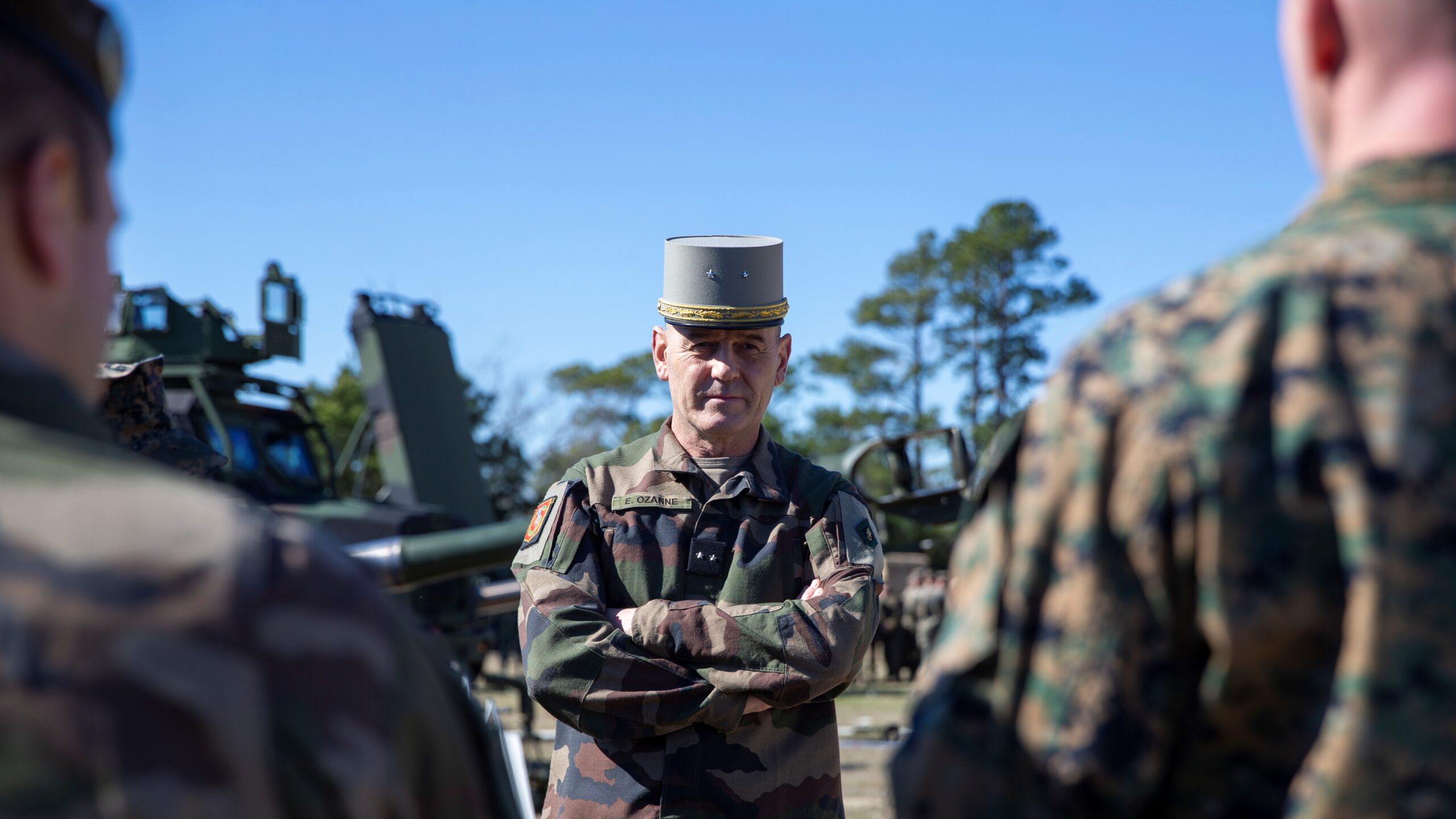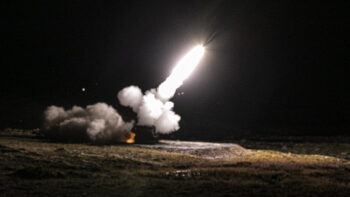
US. Marines from the 2nd Marine Division (2ndMARDIV) during a training mission. The 2ndMARDIV and French Army forces are in discussions about future training opportunities. (US Marine Corps/ Angel D. Travis)
WASHINGTON: With the Ukraine invasion now into its third month, the idea of French and US forces operating together in Europe seems real in a way it has not since the end of the Cold War. With the US Marine Corps east coast forces having seen cuts in their capabilities and numbers, the opportunity to augment capabilities by working with capable like-minded allies is viewed as crucial in shaping a more effective way ahead in European defense.
A recent visit by the head of France’s 6th Light Armored Brigade (LAB) to the American 2nd Marine Division (2ndMarDiv) offers a hint into how the two nations are trying to learn to operate together, particularly as the US Marines are trying to make a new way of war work.
“We always trained very hard following the motto ‘hard training, easy war,’ but what we are currently doing is retraining ourselves to face an enemy with the same capacities as we have,” French Army Brig. Gen. Eric Ozanne, the LAB commander, told Breaking Defense after the trip. “And the first thing we need to learn is how to cope with massive losses in men and equipment. That is where forging a collective moral force embodied in the esprit de corps at the regiment level is absolutely and literally vital.”
Ozanne was hosted early March by US Marine Corps Maj. Gen. Francis F. Donovan, the 2ndMarDiv head, for a four-day visit of various military installations along the East Coast, from USMC Camp Lejeune, North Carolina, to the USS Kearsarge at Naval Air Station in Norfolk, Virginia. The pairing of a Marine unit and a French Army unit, rather than two Army units, may seem odd at first glance. Both sides also tend to maneuver, use support, digitalize, and command forces a bit differently.
But Ozanne pointed out a “similitude of our modus operandi as well as our amphibious characteristic which constitutes the cornerstone of our relationship… Beyond the fact that we are both embarked military forces and forcible entry capabilities, I find that a lot of similarities exist among ourselves, starting with our size.”
Which is to say, lessons can be learned on both sides, particularly as counter-insurgency operations dominated both US and French embarked forces for the last twenty years, during which amphibious experience dropped off.
RELATED: Europe’s special operators are watching Ukraine closely for lessons learned
Regaining some of those capabilities is a focus for US Marine Corps Commandant Gen. David Berger, whose concept of Stand-In Forces (SIF) and the recent creation of three Marine Littoral Regiments (MLRs) could benefit from working with the LAB.
The Marines are now underway with the Phase III Service-Level Infantry Battalion Experiment Campaign Plan — referred to as IBX30 — which is meant to assess the functionality of Berger’s Infantry battalion design. In this month’s issue of Proceedings, USMC Gen. Eric Smith describes this concept as follows:
“Stand-in forces are units that are task-organized, trained, and equipped to disrupt an adversary’s plans at every point on the competition continuum. They are strategically placed where they can collect targeting data, strike to close choke points, or herd adversaries into areas where US naval and joint forces can bring more weapons to bear. These light, highly mobile forces have capabilities that will force an adversary to deal with a unit that previously would have been too small to care about. They can persist independently for days if needed and can reposition with organic mobility assets to avoid being targeted. Their physical and electromagnetic signatures are so low they are not easily detected, and if detected, they possess the lethality to fight.”
The mobility part is a key issue both US and French forces are focusing on for three reasons:
- the ability of a peer enemy to strike in depth and the end of the air superiority enjoyed in previous theaters;
- the ability of the enemy to use counter-mobility means and the necessity to re-train some of the tactics that today’s commanding officers last practiced when in military schools at the end of the Cold war, including maneuvering in a NRBC [nuclear, radiological, biological and chemical] environment;
- the technology push of new equipment revolutionizing the order of battle.
The 6th LAB has been at the forefront of digital transformation Notably, the 6th will be the first brigade to be fully modernized with new-generation Scorpion equipment in 2023.
“The Griffon [new infantry armored vehicle – SICS [new Scorpion Information and C2 System] is a true success and provides our tactical command posts an unprecedented agility which revolutionizes the tempo of maneuver,” Ozanne said. “We now enjoy a fluidity and permanence in command we never had before.”
But to utilize the new concepts and technology, training is needed to “get rid of bad habits adopted during counter-insurgency operations when command posts were fixed and commanding was for that reason much easier,” he stressed.
A return to a more infantry-centric approach is another place where US Marines and the French Army meets as well, but with slightly different emphasis. Whereas the USMC under the current commandant bets on footprint lightness, agility and high tech (even getting rid of hundreds of tanks and of two of its five helicopter squadrons) to differentiate itself from the US Army, the French Army differentiates itself by putting an end to the multi-role characteristic of brigades which until now were dedicated to counter-insurgency.
“The Marines and the French Army came up with the same conclusion, i.e. that we cannot “do it all” in the new threat environment,” Ozanne said. For the French Army, brigades are going to be specialized again into the traditional three segments, i.e. armored (with VBCI and Leclerc), medium (with Griffon and the new Jaguar to be incorporated in cavalry units for the first time this year) and light brigades (with Serval and Jaguar as well).

French Army Brig. Gen. Eric Ozanne, the commanding general (CG) of 6th Light Armored Battalion (LAB), is greeted by U.S. Marines with 2d Marine Division on Camp Lejeune, North Carolina, Feb. 28, 2022. (US Marine Corps/Megan Ozaki)
“High intensity calls for such a return to differentiation. Rerolling is not feasible anymore and you can actually already see it on some theaters of operations such as in Estonia, where VBCI-Leclerc groups, for instance, self-rotate on a regular basis to contribute to NATO’s Enhanced Forward presence with the Lynx mission,” Ozanne said.
If the current partnership between the Franco-American amphibious sister units works well, both Ozanne and Donovan want to boost it to a higher command level, a prospect made possible thanks to massive investments on both sides in new distributed simulation capabilities. Indeed, the Marine Corps Warfighting Laboratory (MCWL) IBX30 assessment plan does rely heavily on Wargaming and Modeling and Simulation studies. “These new capabilities are especially useful to develop high intensity warfare tactics, especially when simulating large losses, but can only be used as a complement to live training,” stresses Bgen Ozanne.
Brian D. Beaudreault, who retired last July a the three-star heard of the II MEF and who previously commanded the 2nd MarDiv, agrees with such a need for deeper integration and interdependence. Having been a strong proponent of the bilateral rapprochement, he considers such a combined force capability an imperative.
“When I was the CG of II MEF, I felt that we needed to aim for more than just interoperability but rather interdependence. That required a greater degree of trust than interoperability, but trust is the glue that holds relationships together,” Beaudreault said.
“Beyond adding greater capacity in the force which will yield greater resiliency in times of high casualties, the 6th LAB would bring incredibly important capabilities to the fight that the Div didn’t possess such as armor. There was the multiplicative aspects of redundant capabilities which increases a commander’s flexibility in maneuvering forces but also expands his options when an ally is bringing in a capability that is a true gap filler that also can be self-sustaining, execute its own independent C2, have its own organic fires, etc…”
“I am thrilled to see the relationship continuing to mature, and I believe there is reason for great optimism on further improving upon our interoperability (and interdependence) goals,” he told Breaking Defense. “The future outlook of this combined force capability is indeed bright and will certainly prove to be a strong deterrent force. Should deterrence fail, 6th LAB and 2d MARDIV fighting under a consolidated C2 construct is a force that is highly ready to fight and win while operating side by side.”
The coming weeks, months and years could show a total transformation in how the US and its NATO allies approach defense and deterrence in Europe. Getting the links between the French Army and US Marines in a workable place could prove vital, and the work is now underway.






















